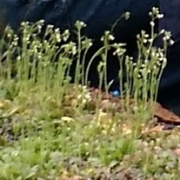In Nature: Origin of epigenetic variation in A. thaliana
 Last year, we published a paper on DNA mutation rates in A. thaliana, based on the analysis of the genomes of 5 mutation accumulation lines that shared a common ancestor 30 generations ago. We have now determined the methylome of these 5 plus 5 additional lines of the same population. In addition, we looked at 2 lines that had been propagated for only 2 generations and were close to the common ancestor, and we compared for two of the late lines directly two successive generations. The full paper with Supplementary Information can be found here.
Last year, we published a paper on DNA mutation rates in A. thaliana, based on the analysis of the genomes of 5 mutation accumulation lines that shared a common ancestor 30 generations ago. We have now determined the methylome of these 5 plus 5 additional lines of the same population. In addition, we looked at 2 lines that had been propagated for only 2 generations and were close to the common ancestor, and we compared for two of the late lines directly two successive generations. The full paper with Supplementary Information can be found here.
We found that methylation rate changes at individual cytosine occur more than three orders of magnitude as often as DNA sequence mutations.
However, such epimutations do not occur randomly in the genome, so that independent lines often show the same changes, and they apparently often revert. In contrast to epimutations at individual positions, the change of entire methylated regions was much rarer, in the same range as the appearance of DNA sequence mutations. Together, this work has important implications for the ability of epimutations to be selected during evolution. The higher the reversion rate, the stronger selection has to be for such an allele to increase in the population.



